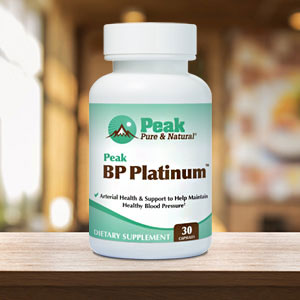Get Easy Health Digest™ in your inbox and don’t miss a thing when you subscribe today. Plus, get the free bonus report, Mother Nature’s Tips, Tricks and Remedies for Cholesterol, Blood Pressure & Blood Sugar as my way of saying welcome to the community!
What’s in your mug could lower your risk for hip fracture

For years, I’ve been telling people that a broken hip is my worst nightmare. Now that I’m closer to 70 than 60, that fear has cranked up a notch, and I’m doing all I can to prevent it from happening.
Breaking a hip, especially for people over 60, can be a death sentence. The long period of immobility that follows can bring on all sorts of other health complications.
So, what can you do to prevent a hip fracture?
An observational study of 26,000 women has found that if you’re a regular coffee or tea drinker — you’re a step ahead of the rest of us…
Coffee or tea plus extra protein reduces hip fracture risk
Food scientists at the University of Leeds have found that women can reduce their risk of hip fracture by 14% if they add just 25g of protein to their daily diet.
But not only that, they can bring that risk down an additional 4 percent for every cup of tea or coffee they drink!
The data used in the study came from the UK Women’s Cohort Study, which recruited participants between 1995 and 1998. At the time they entered the study, the women were between 35 and 69 years old.
The protective benefits of protein were even greater for women who were underweight. For these women, an additional 25g of daily protein was linked to a 45% reduction in the risk of hip fracture.
Because women who are underweight tend to have reduced bone mineral density and muscle mass, the additional protein has an even more dramatic impact on their likelihood of fracturing a hip.
More good news? The protein can come from any source: meat, dairy, eggs, beans, nuts or legumes.
Hopefully, you’re already getting plenty of calcium in your diet, vitamin D and practicing some weight-bearing exercises to support your bone health. But it’s certainly nice knowing your coffee or tea habit has been helping all along as well.
How to get that extra 25 g
It’s not as hard as you might think to add that 25g of protein to your diet.
Here are a few ways to do it:
- Three to four eggs
- A piece of salmon or steak
- Pasta and tomato sauce (3/4 c. pasta, ¼ c. tomato sauce, topped with ¾ ricotta cheese
- ¾ c. tuna salad
- A snack plate with a hard-boiled egg, 1.5 oz. cheddar cheese and 5 multigrain crackers
- A cup of Greek yogurt topped with 2 tbsps. walnuts
- A cup of cottage cheese
- 4 oz. almonds or pistachios
- 3-4 tablespoons of peanut butter
Looks like I’ll be adding a peanut butter sandwich and some yogurt to my afternoon snack routine!
Why hip fractures are so dangerous
The vast majority of people who suffer hip fractures are over 65. And many factors can increase our fall risk.
But bone density tends to decrease with age, and osteoporosis-related breaks are among the most common types of hip fractures. Just falling off a chair can be enough to break a brittle hip bone.
In our 60s and 70s, we start losing muscle mass — about three percent per year! This, too, makes falls more likely, and recovery from a broken hip more difficult.
It can take anywhere from a few months to a year before you can walk following a hip fracture — and that’s the real danger. The decreased mobility can lead to blood clots in the legs or lungs, pneumonia, or pulmonary embolism, all of which can be fatal to someone in a weakened, post-surgical state.
Of course, there are things that could help you get back up following hip surgery faster — but avoiding that danger altogether is preferable by far. And what’s easier than sipping a cup and enjoying a PB&J?
Editor’s note: Are you feeling unusually tired? You may think this is normal aging, but the problem could be your master hormone. When it’s not working, your risk of age-related diseases skyrockets. To reset what many call “the trigger for all disease” and live better, longer, click here to discover The Insulin Factor: How to Repair Your Body’s Master Controller and Conquer Chronic Disease!
Sources:
How women can reduce the risk of hip fracture — Eureka Alert
Foods, nutrients and hip fracture risk: A prospective study of middle-aged women — Clinical Nutrition
Hip Fractures — Crystal Run Health Care
Hip fractures: Most elderly unlikely to fully recover — Science Daily














